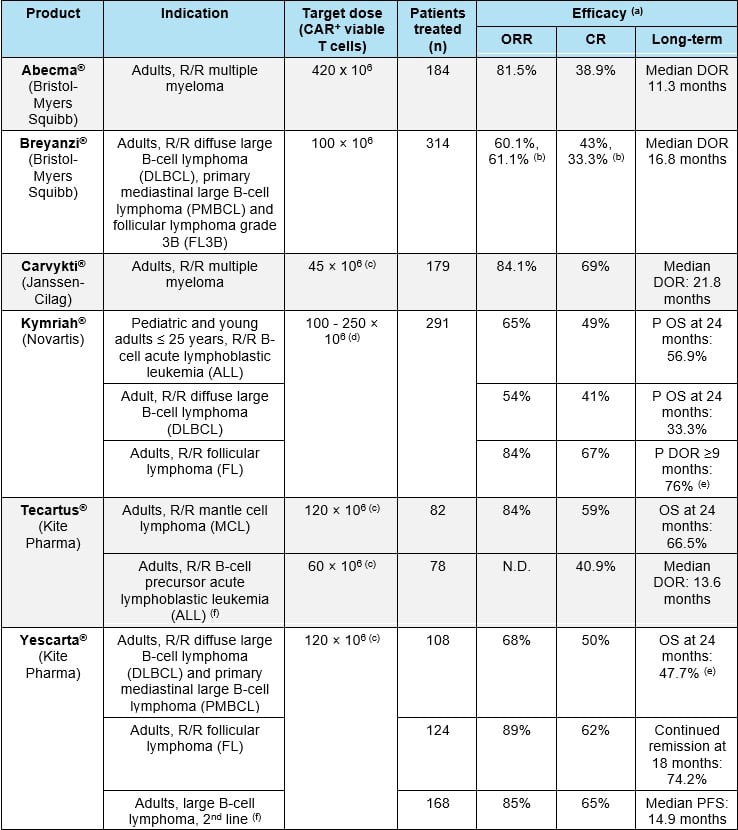May 10, 2024

May 10, 2024

In January 2024, the FDA Center for Biologics Evaluation and Research (CBER) Office of Therapeutic Products issued a guidance document- Considerations for the Development of Chimeric Antigen Receptor (CAR) T Cell Products. This long-awaited guidance provides guardrails which allow CAR T product developers and manufacturers to focus efforts for consistent expectations rather than relying on perspective review of prior approvals. The guidance document is an all-in-one guidance document covering nonclinical, clinical and CMC in one guidance document clearing up many misconceptions. The scientific community has seen exponential growth in our understanding of the immune system’s abilities and now a guidance document is available to assist our understanding of how to bring this knowledge to patients. While this guidance specifically focuses on CAR T cell products, some of the information and recommendations provided may also be applicable to other genetically modified lymphocyte products, such as CAR Natural Killer (NK) cells or T cell receptor (TCR)-modified T cells.
The new FDA guidance is designed to aid in the development of ex vivo-manufactured CAR T cell products, emphasizing a unified approach covering nonclinical, clinical, and CMC aspects. The guidance outlines expectations for various types of treatments, providing a comprehensive framework for identifying transgenes, documenting delivery, binding of the construct, signaling, persistence, specificity, and ensuring patient safety through supply chain, chain of identity, processing, and controls. The guidance strongly recommends the creation of a Critical Quality Attribute (CQA) – Critical Process Parameter (CPP) database, incorporating leukapheresis release criteria to enable lifecycle process improvement and effective investigation program.
This guidance also includes several recommendations:
The FDA guidance establishes a common set of expectations which allow developers to create a roadmap, identify the resources and studies that are needed to bring lifechanging treatments from benchtop to bedside. Prior to this guidance, developers utilized data from redacted filings often believing that the “reward was worth the risk”. This approach resulted in non-optimized nonclinical programs, clinical holds and process redesigns because developers failed to fit the pieces together which put patients on the wrong side of a safety profile. Using appropriate risk analysis methodology combined with regulatory guidance creates a clear plan to bring treatment through the development lifecycle. This guidance provides a solution for how to appropriately identify the study population which is critical due to the FIH risk reward paradigm as well as considerations when conditions change.
The benefits of having comprehensive guidance in a single document include:
The framework provides a guide for both clinicians developing a strategy and regulatory authorities tasked with maintaining the safety of US populations. Sponsors with products intended for the US market or with products in the market can expect requests for document packages based upon this guideline during meetings. Sponsors with products outside of the US can expect harmonization of this guidance with other regulatory bodies.
ProPharma is a trusted partner for CAR T cell therapy development, providing expertise in regulatory compliance, document authoring, and gap assessments. Our integrated teams offer support in nonclinical, quality, compliance, clinical research, development technologies, and pharmacovigilance. We ensure seamless adherence to guidelines, from comprehensive audits to real-time study parameter monitoring and patient outcome tracking.
FDA guidelines include the statement “This guidance represents the current thinking of the Food and Drug Administration (FDA or Agency) on this topic. It does not establish any rights for any person and is not binding on FDA or the public. You can use an alternative approach if it satisfies the requirements of the applicable statutes and regulations” because no guidance can be written for every treatment or situation. This guidance aligns current best practices with existing standards and bridges an important gap between treatments and patient safety. The guidance provides a systematic approach to enable antigens for therapeutic responses including nonclinical, analytical, labeling, manufacturing and supply chain.
If you are seeking assistance with CAR T product development and compliance with the new FDA guidance, ProPharma can help. Contact us today and speak to an expert about your needs.
TAGS: Quality & Compliance FDA Guidance Cell and Gene Therapy

July 1, 2024
The Benefit of the Common Application Form for GMO Applications GMO Application Not Included in Clinical Trial Regulation With the transition period for the Clinical Trial Regulation No 536/2014...

September 20, 2022
It comes as no surprise to any pharmaceutical or biotech company that planning the clinical development of CAR-T cells is an extremely challenging endeavor: high efficacy is expected in each targeted...
March 4, 2021
How much is too little versus too much when developing quality systems and controls for investigational cell and gene therapies? Because these therapies are being administered to patients during all...